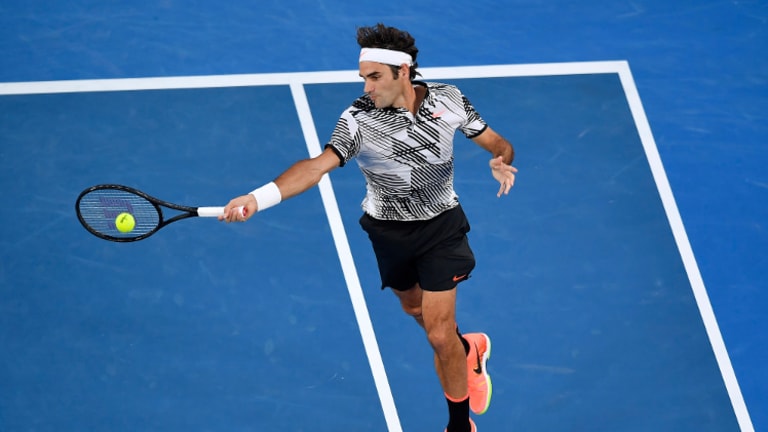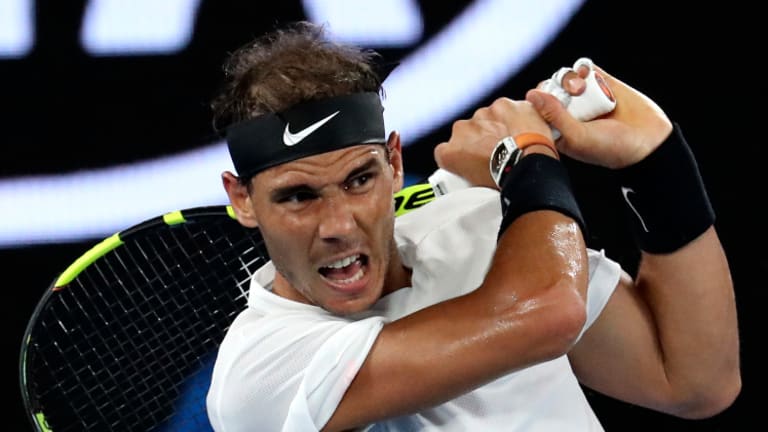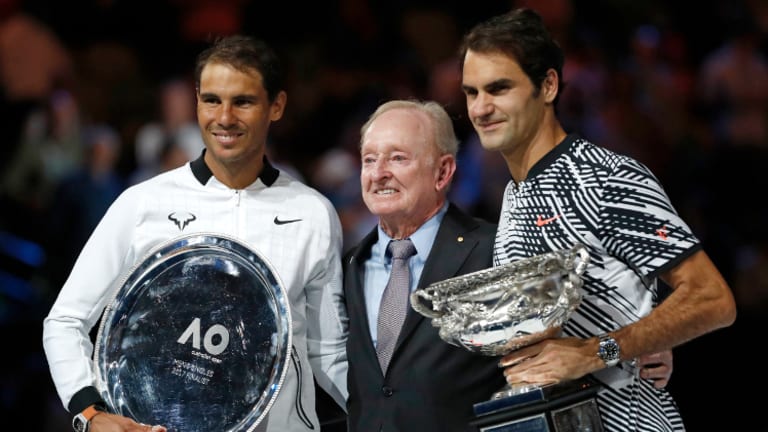“He doesn’t hit the ball flat and hard. It’s more with a lot of spin, which makes the ball bounce, bounce high, and that’s a struggle I had today. I tried to get out of it, but kind of couldn’t.”
These words were spoken by a 22-year-old Roger Federer after he had faced a 17-year-old named Rafael Nadal for the first time, in Miami in 2004. Thirteen years and 34 meetings later, as the two dueled into the fifth set and the fourth hour of the 2017 Australian Open final, Federer was still trying to “get out” from behind Nadal’s heavily-spun, high-bouncing forehand.
The shot had cost Federer their last six Grand Slam matches, dating back to 2007. By the time Nadal took a 3-1 lead in the fifth set on Sunday night in Melbourne, it looked almost certain to cost him a seventh. Rafa was bearing down hard, hitting with more speed and conviction than he had all night. Tennis’s premier wrestler looked to have Federer all but pinned again.
More than in their lengthy classics from the past, the first four sets of Federer-Nadal XXXV felt like preliminaries to the decider. Federer, as expected, played clean, aggressive tennis to win the opening set. What was slightly unexpected was how he did it. After listening to him talk about the fast courts in Melbourne for two weeks, I thought Federer would barrel forward as often as he could in this match. While he did get to the net 40 times, he attacked primarily with his ground strokes, and finished with 73 winners.
“I told myself to play free,” Federer said. “...Be free in your head, be free in your shots, go for it. The brave will be rewarded here.”
“He put a lot of balls in, and taking a lot of risks,” Nadal said of Federer. “And taking the ball very early, playing very fast.”


